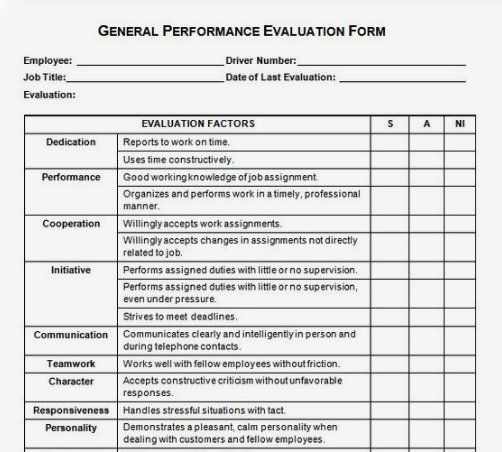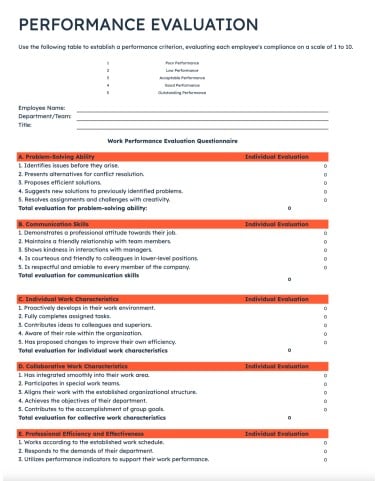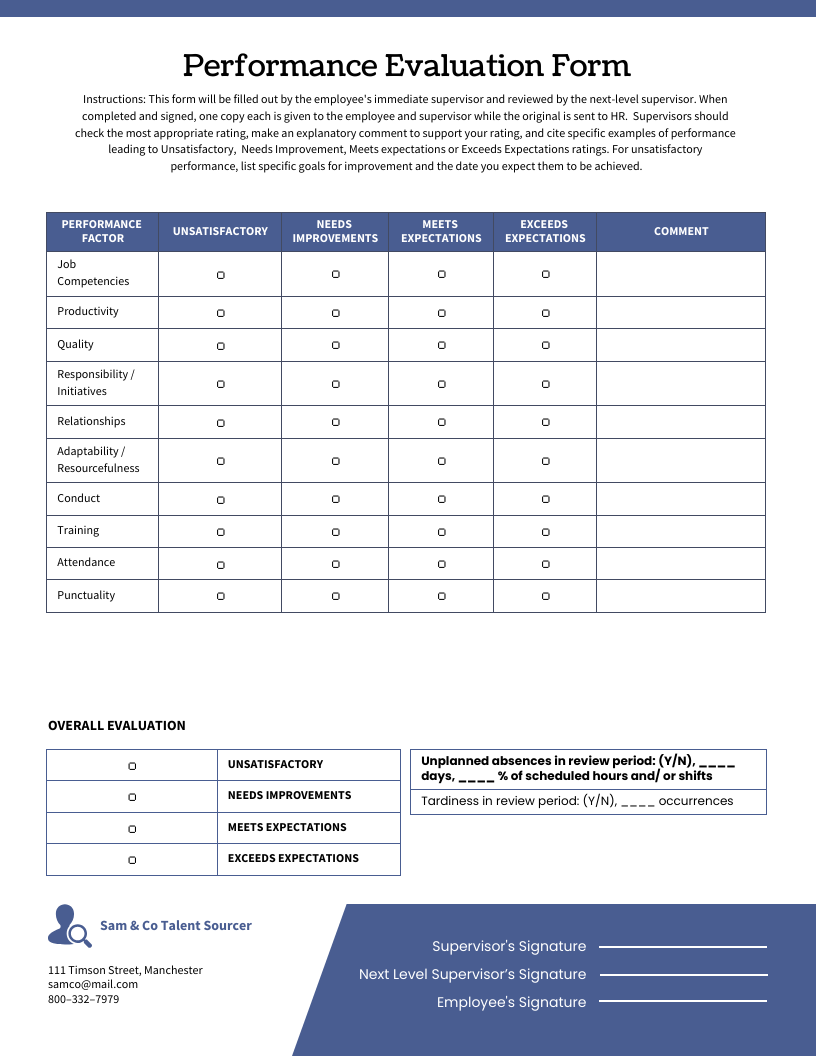Company Performance Evaluation: Key Insights for Measuring Success
In today’s competitive business world, company performance evaluation is more than just a routine task. It is a strategic approach to assessing the effectiveness of a company’s operations, productivity, and overall success. Evaluating performance not only helps businesses measure their achievements but also provides insights into areas that require improvement.

What is Company Performance Evaluation?
Company performance evaluation is the process of assessing the effectiveness of a company’s operations. It helps businesses measure their performance against specific objectives and benchmarks. By analyzing key performance indicators (KPIs) and other metrics, companies can gauge their progress and make data-driven decisions to enhance growth and profitability.
Why is Company Performance Evaluation Important?
Regular performance evaluations provide companies with critical insights that inform business strategies. These evaluations help identify strengths, weaknesses, and opportunities for growth. A robust performance evaluation process enables companies to stay competitive, increase efficiency, and enhance employee satisfaction.
Key Metrics for Performance Evaluation
When evaluating a company’s performance, it’s essential to track various metrics. These may include:
-
Financial performance: Revenue, profit margins, and ROI are some of the most important financial indicators.
-
Employee performance: Assessing employee productivity, satisfaction, and retention rates.
-
Customer satisfaction: Gathering feedback from customers through surveys or reviews to measure how well the company meets their needs.
-
Market share and growth: Comparing your company’s performance against competitors and evaluating market trends.
Different Methods of Company Performance Evaluation
There are several methods used to evaluate a company’s performance. Understanding these methods helps businesses select the right approach for their needs.
1. Balanced Scorecard
The balanced scorecard approach evaluates a company’s performance from four perspectives: financial, customer, internal processes, and learning and growth. This holistic approach ensures that a company considers all aspects of its operations and aligns its goals across departments.
2. Key Performance Indicators (KPIs)
KPIs are measurable values that indicate how effectively a company is achieving its business objectives. Businesses use KPIs to track progress in critical areas such as sales, marketing, finance, and customer service. These indicators provide actionable insights and help guide strategic decision-making.
3. 360-Degree Feedback
In the 360-degree feedback method, employees receive performance reviews from multiple sources, including managers, peers, and subordinates. This provides a well-rounded view of individual performance and contributes to company-wide evaluations.
4. Benchmarking
Benchmarking involves comparing a company’s performance with industry standards or competitors. This method allows businesses to identify best practices and areas for improvement. It also helps companies stay competitive in their respective markets.

The Role of Technology in Performance Evaluation
In recent years, technology has played an increasingly important role in the performance evaluation process. Performance management software enables businesses to collect, analyze, and track performance data in real-time. This allows for more accurate assessments and provides instant access to insights, improving decision-making.
Benefits of Using Performance Management Software
-
Real-time data analysis: With automated systems, companies can get updated performance metrics instantly.
-
Increased objectivity: Software reduces the risk of bias and ensures that evaluations are based on data rather than subjective opinions.
-
Customizable reports: Businesses can create tailored reports to track specific KPIs or performance metrics.
-
Employee engagement: Performance software often includes features for feedback, goal-setting, and recognition, which boosts employee motivation.
Performance Review Templates
Using standardized performance review templates can help streamline the evaluation process. These templates guide managers in assessing employees and ensure that key areas of performance are addressed consistently.

How to Conduct an Effective Performance Evaluation
To conduct an effective performance evaluation, consider the following steps:
1. Set Clear Goals and Expectations
Before the evaluation process begins, ensure that employees understand their goals and expectations. Clear objectives provide a benchmark for evaluating performance and prevent confusion.
2. Gather Comprehensive Data
Collect data from various sources, including sales reports, customer feedback, and employee performance reviews. This helps build a comprehensive view of the company’s performance across all areas.
3. Analyze the Results
Analyze the collected data to identify trends, strengths, and areas that need improvement. Use KPIs and other metrics to provide measurable insights.
4. Provide Constructive Feedback
When delivering performance reviews, ensure that the feedback is constructive and actionable. Highlight areas of improvement and provide support for professional development.
5. Create an Action Plan
Based on the evaluation results, create an action plan for improving performance. This may involve setting new goals, offering training, or adjusting business strategies.
Challenges in Company Performance Evaluation
While performance evaluations are essential, they can come with challenges. Here are some common issues businesses face when conducting evaluations:
1. Subjectivity in Reviews
Performance reviews can sometimes be biased, especially when managers base evaluations on subjective opinions. This can be mitigated by using objective metrics and 360-degree feedback.
2. Data Overload
Collecting too much data can overwhelm decision-makers. To avoid this, focus on the most relevant KPIs and metrics that directly impact business success.
3. Employee Resistance
Employees may feel anxious or defensive about performance evaluations. Creating a culture of trust and transparency helps employees accept feedback and use it for growth.
4. Inconsistent Evaluations
Inconsistencies in how performance is evaluated across different teams or departments can lead to confusion and resentment. Standardizing the evaluation process ensures fairness.
The Impact of Performance Evaluation on Employee Engagement
When done correctly, performance evaluations can have a profound impact on employee engagement. Employees who receive regular, constructive feedback feel more valued and motivated to improve. Recognizing achievements and providing opportunities for growth fosters loyalty and increases productivity.
Strategies to Improve Employee Engagement
-
Set clear career development paths: Help employees understand how they can progress within the company.
-
Provide regular feedback: Don’t wait for annual reviews—offer feedback throughout the year.
-
Recognize achievements: Celebrate employee milestones and accomplishments.
FAQs About Company Performance Evaluation
Why is performance evaluation important?
Performance evaluation helps businesses measure progress, identify areas for improvement, and ensure that the company is achieving its goals. It provides actionable insights for better decision-making and strategy development.
How often should company performance evaluations occur?
Performance evaluations should be conducted regularly, typically on an annual or semi-annual basis. However, businesses can benefit from continuous feedback and tracking of KPIs throughout the year.
What are some common performance evaluation methods?
Some common methods include the balanced scorecard, key performance indicators (KPIs), 360-degree feedback, and benchmarking. Each method offers unique insights into different aspects of performance.
How can technology improve performance evaluation?
Technology, such as performance management software, enables businesses to track real-time data, provide objective feedback, and generate customizable reports, making the evaluation process more efficient and accurate.
Conclusion
Company performance evaluation is a vital process for ensuring that a business stays on track and meets its goals. By using the right evaluation methods, businesses can measure performance across key areas, identify weaknesses, and implement improvements. With the help of technology, companies can streamline their evaluation process, gather real-time data, and make informed decisions that drive growth. Regular performance reviews also contribute to employee engagement, helping create a more motivated and productive workforce.




